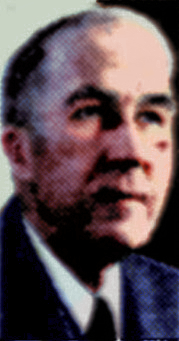The Pittsburgh Press (February 7, 1945)
Sea of fire sweeps Manila
Trapped Japs burn city as U.S. troops stalk them in streets
MANILA, Philippines (UP) – U.S. troops fought fire and the Jap enemy through the streets of burning Manila today in the final tragic act of the capital’s liberation.
Several thousand Japs, scattered in isolated pockets throughout Manila, were dying in a welter of flame and gunfire. The enemy apparently was determined to destroy much of the city before surrendering it to Gen. Douglas MacArthur’s liberating army.
The cornered enemy blasted and burned everything about them in a frenzy of senseless destruction that began at sundown Monday, after they had blown up most of the water pumping stations to hamper effective firefighting.
Whole areas of the city were engulfed in a roaring sea of fire as the flames spread from the downtown business section into the northern districts, roasting Filipino civilians and Jap suicide squads alike.
The conflagration mushroomed from block to block throughout Monday night and on into daylight Tuesday, fed by exploding gasoline and munitions dumps.
Tokyo radio said that U.S. troops in Manila have fallen into a “most clever and well-prepared trap.”
The Japs shelled Santo Tomas and Bilibid Prison internment camps, where thousands of Allied civilians who had been interned by the Japs still were sheltered. In midafternoon, the Japs made four direct hits on the main Santo Tomas University building.
Buildings were burning on all sides of Santo Tomas, but the camp not yet was touched by fire and its water pumps were working.
Stalk Jap survivors
Grim-faced U.S. infantrymen and Filipino guerrillas stalked the survivors of the Jap garrison through the streets, finishing them off with gun, grenade and bayonet. Others were dynamiting buildings to create fire-gaps that might check the flames.
The Japs estimated at several thousand, faced three U.S. divisions, but they apparently were committed to a suicidal stand and there was little prospect of a general surrender. Every sniper and isolated pocket of resistance probably will have to be cleared out before Manila finally is liberated.
It was estimated that Jap destruction and the ravages of battle have caused two billion dollars damage in the city.
The Japs still had a number of mortars and some artillery inside Manila and had anti-aircraft batteries operating around Nichols Field to the south, where units of the 11th Airborne Division ran into tough opposition as late as Monday night. One U.S. plane was shot down by enemy flak over Manila Monday.
Hard fighting ahead
Gen. MacArthur, who returned to Manila today, ordered divine thanksgiving services. He told huis men that “you will shortly complete the liberation of the Philippines,” but it was plain that some hard fighting lay ahead in Manila, and elsewhere on Luzon, despite the fact that the Japs are so scattered and broken that their position is militarily hopeless.
Vanguards of the 11th Corps who sealed off Bataan from the north over the weekend and started down the east coast of the peninsula were reported meeting stubborn resistance south of Dinalupihan and it was expected that the several hundred enemy troops on Bataan would dig in for a finish fight.
Far to the north, the Japs launched a heavy counterattack against U.S. positions northeast of Rosario Sunday night, but were repulsed with heavy losses. Bitter fighting was also continuing around San Jose, to the southeast, where the Americans were pushing up into the Caraballo Mountains, as well as in the bypassed Munoz area farther south.
U.S. Liberator bombers staged another heavy raid on Corregidor Monday, dropping 180 tons of bombs without aerial or anti-aircraft opposition.
Other bombers pounded the Aparri and Tuguegarao airfields to discourage any Jap idea of moving in aerial movements.
The New Delhi radio quoted Tokyo as saying that U.S. troops have landed on Bohol Island, midway between Leyte and Cebu in the south-central Philippines.
